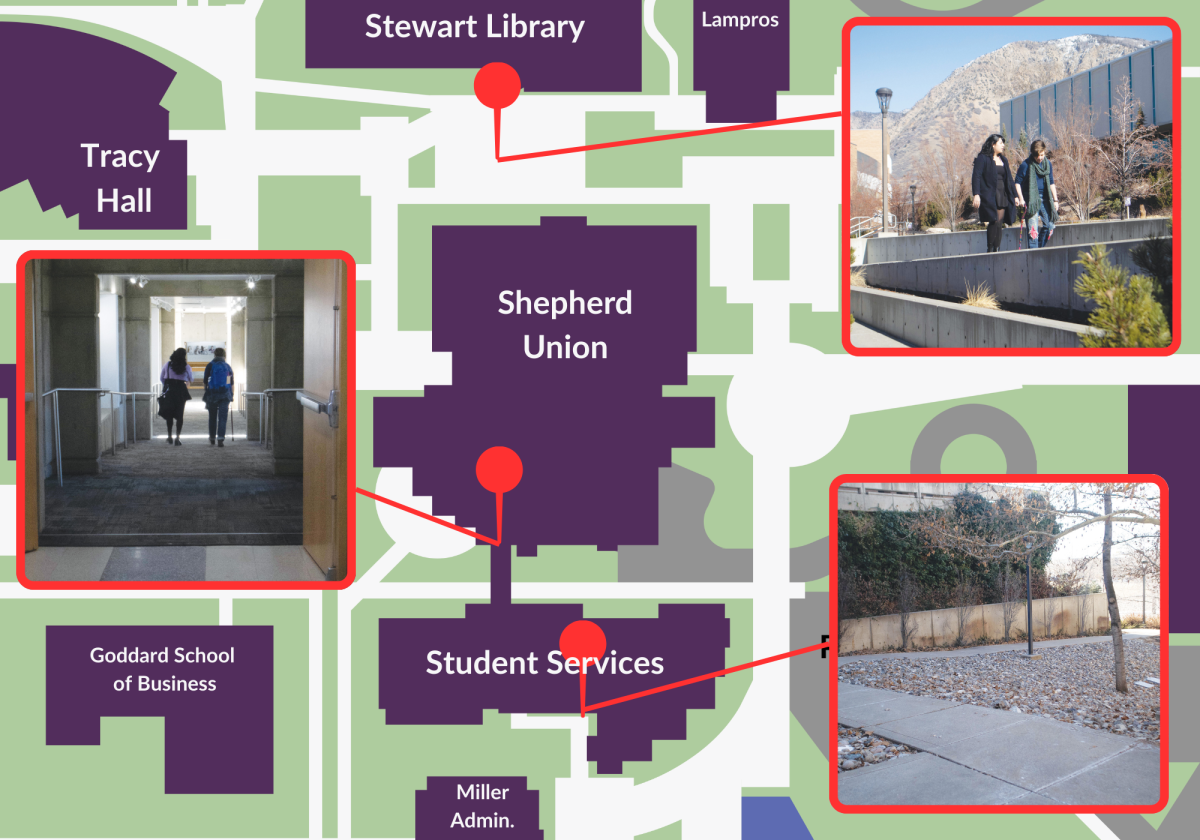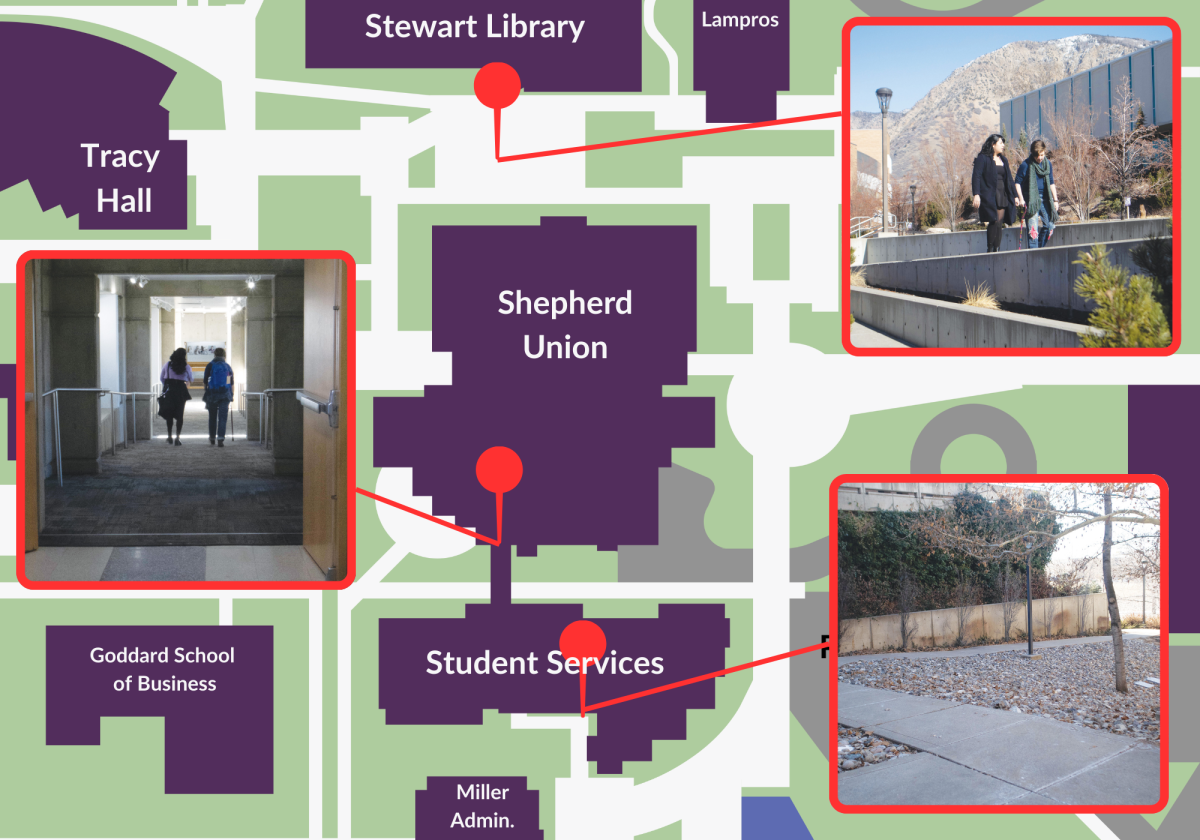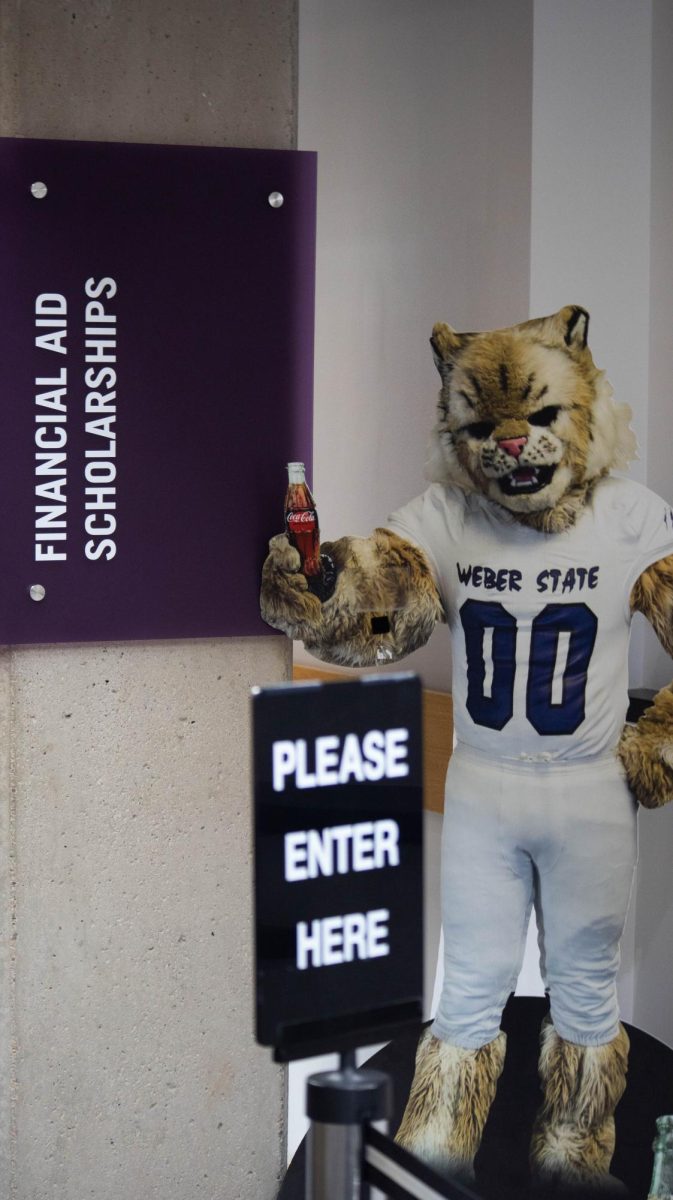
Professional dancers may not have a set routine when it comes to career planning, but what they appear to be in step with each other on is that regardless of age, timing and income dance is meant to move people.
Weber State University dance performance student, Jonathan Guerra is just beginning to learn this.
Guerra came to WSU hoping to gain entrance into the school’s competitive nursing program. After two years, he still hadn’t been accepted.
Upon taking ballet at WSU, Guerra’s career path took a turn onto the stage. He had never had formal dance instruction prior to this, and his intention was simply to nurture his curiosity while fulfilling a general education requirement.
“I didn’t even know how to tell my right and my left foot apart,” Guerra said.
That didn’t stop Guerra’s instructor from being impressed with his natural abilities and encouraging him not only to apply as a dance major, but to audition for Orchesis, the program’s end of semester recital and dance company. Guerra made it into both, despite his lack of experience.
Having such a late start in the industry isn’t an issue for Guerra. He said men tend to get a much later start in professional dance, and he has always been an active person, adapting easily to the physical rigors of full-time dance.
Guerra looks forward to a career as a dancer after getting his education, which he plans on using as a backup, in case he doesn’t make it as a professional dancer. He hopes his efforts land him work in Broadway musicals and dance companies.
According to ziprecruiter.com, having a backup plan is wise, since the low end of wages for a dance professional is at $15,500 per year. The high end swings all the way up to $257,500.
In the meantime, Guerra already has a part-time job in dance. He teaches ballet, modern and hip-hop to local youth. For him, dance is not just about technique. He enjoys paying his dance education forward to his young students.
“I always tell my kids, ‘you need to be always pushing yourself, asking questions. You never know what will change your life,'” Guerra said. “Dance changed my life.”
Looking to change lives with dance is New York City Ballet principal dancer, Daniel Ulbricht. He founded of Stars of American Ballet, a touring dance company that brings ballet to under-served communities across the country.
The company held a performance at WSU’s Browning Center on Nov. 2, and Ulbricht, who once trained at the New York City Ballet’s School of American Ballet, taught a master class for WSU dance students.
Ulbricht, who was first encouraged to try ballet by his sister’s dance teacher at 11 years old, emphasized that the most important thing for a dancer to think about when making career decisions is timing.
Dancers will never be able to follow a single career path to find success. Ulbricht had to trust his instinct for good timing to start his company.
“The beauty of everyone’s path is that it’s their own,” Ulbricht said.
There is more than one way to become a professional dancer. Some go straight into the professional world, and some go to college first.
Ulbricht believes college might be able offer the opportunity to learn things that the professional world can’t offer.
WSU dance professor Amanda Sower echoed this sentiment. She believes that dance majors are able to hone their crafts in a safe environment. College allows dancers to improve their technique, methods of leadership, communication and teamwork.
These skills can lead to opportunities outside of just dancing, including the chance to become a choreographer, educator or director. Dancers learn to be punctual, hardworking and team players, which are skills that Sower said can transfer to any industry.
Sower used to be a professional dancer. In her late 20s, she noticed that her body wasn’t keeping up with her mind. She decided to go back to school to get her master’s degree in dance education.
Brooklyn Farr of Bountiful works as a professional dancer and also goes to WSU as a criminal justice major. She is a member of the first-ever Utah Jazz hip-hop team.
Farr has been dancing competitively since she was three. She tried out for the new Jazz team this summer, not expecting to make it. She was one of the 16 who made the cut.
Farr was skeptical of continuing with dance after high school because she perceived it as a short-lived career that would end by her 30s. She knew how much hard work it would take. As a high schooler, she danced competitively for 40 hours a week on top of her studies as an honors student.
Since her job with the Jazz is only part-time, Farr said it is fulfilling to be able to dance and also make college work.
The physical toll and hard work it takes to dance never goes to waste. Every dancer will use their passion in a different way. Some will follow their dancing to a professional career, while others will pursue education or a different career path.
“Dance can have a very important effect on people’s lives,” Ulbricht said. “I get to play every day. I’ve never worked a day in my life, and that’s a very amazing feeling.”



















